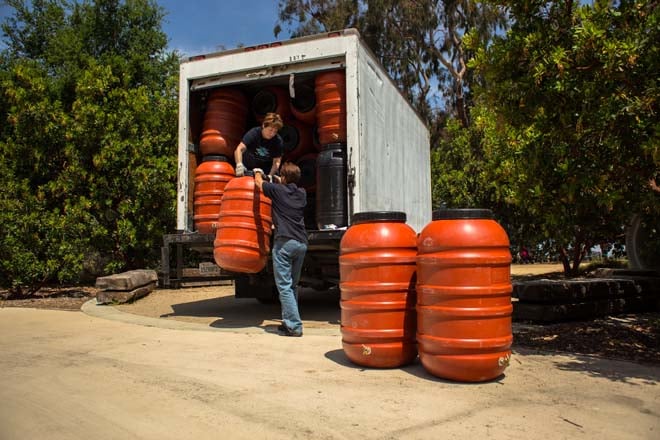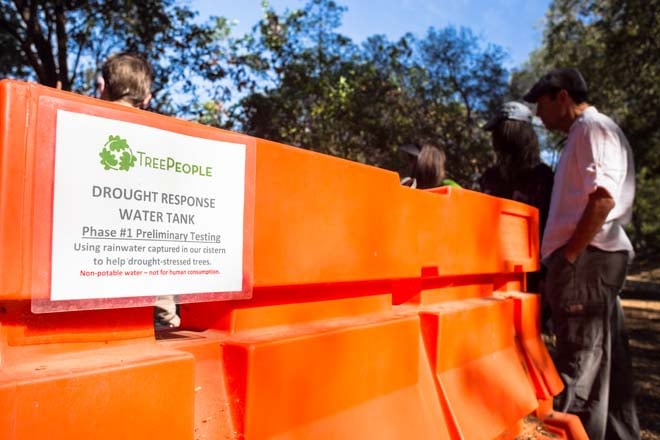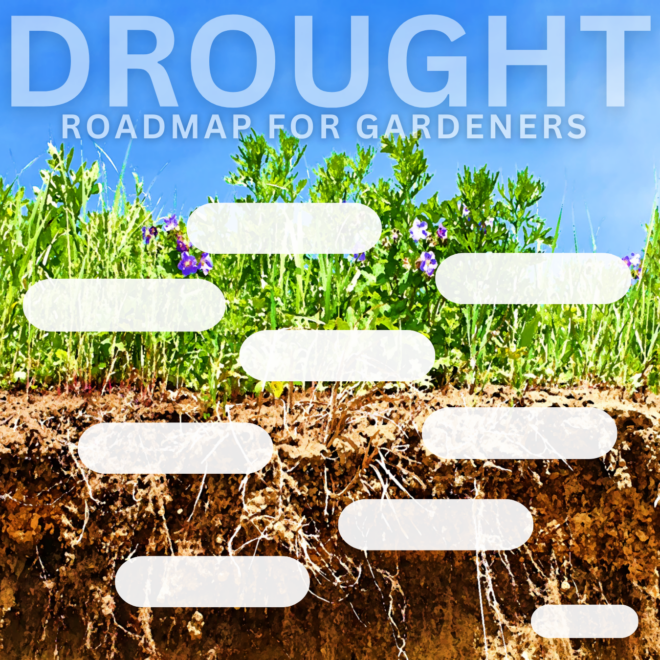
Drought Roadmap for Gardeners: Water
Contributor
WATER INTRODUCTION
Gardens and landscapes in the built environment come under fire when water starts to be scarce. Granted, many of our landscapes are inefficient in their consumption of water; there appears to be little accurate common knowledge on the subject.
Water districts focus on landscapes when pressuring reduced water consumption, which is understandable. It is hard to tell people not to drink, clean, shower, flush. Landscapes become the sacrificial lamb. One problem with this is the tremendous environmental and human benefits that come from these spaces.
We can’t just regulate water for landscapes all the way down to zero and still expect to have them around. Even if we stopped irrigating entirely, it wouldn’t come close to solving water shortage problems. We could free up more water by conserving more energy, or eating and drinking differently. We could shower faster and less often or turn the tap off while brushing our teeth.


These landscapes consume a fraction of the total water supply. Where I am in California, that amount is seven percent. The percentage is likely smaller in parts of Pacific Horticulture’s region where there’s more precipitation and less reliance on supplemental irrigation.
With that in mind, is some fraction of seven percent going to solve the water problem? Heck no. I’m going to do my best anyway, because if I’m not trying, why should anyone else? Why should water agencies fix their leaks, or packaging companies make their products more efficiently?
This section will look at a variety of approaches for using water efficiently in landscapes and gardens. Our goal is to get the most out of the water we have for landscape use. We are going to look at supplemental watering, including irrigating, emergency watering, and making the most of free water (like rain). The goal of watering our gardens is to supplement what the weather provides so that our plants have enough water to be appropriately hydrated and healthy. It’s simple in concept: apply the right amount of water to the rootzone so plants can absorb and pull that water up through the roots to serve their needs. But doing this well requires some thoughtfulness.
CLICK ON THE TOPICS IN THE IMAGE BELOW TO EXPLORE EACH SECTION











Responses